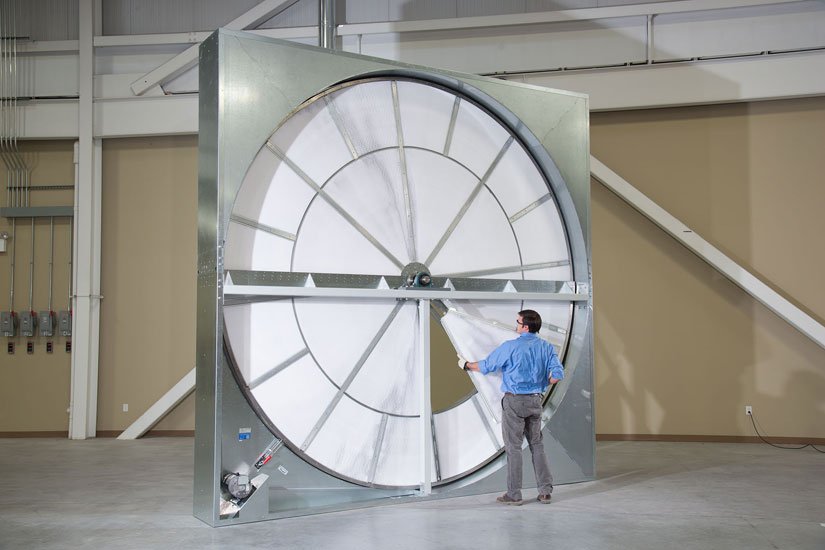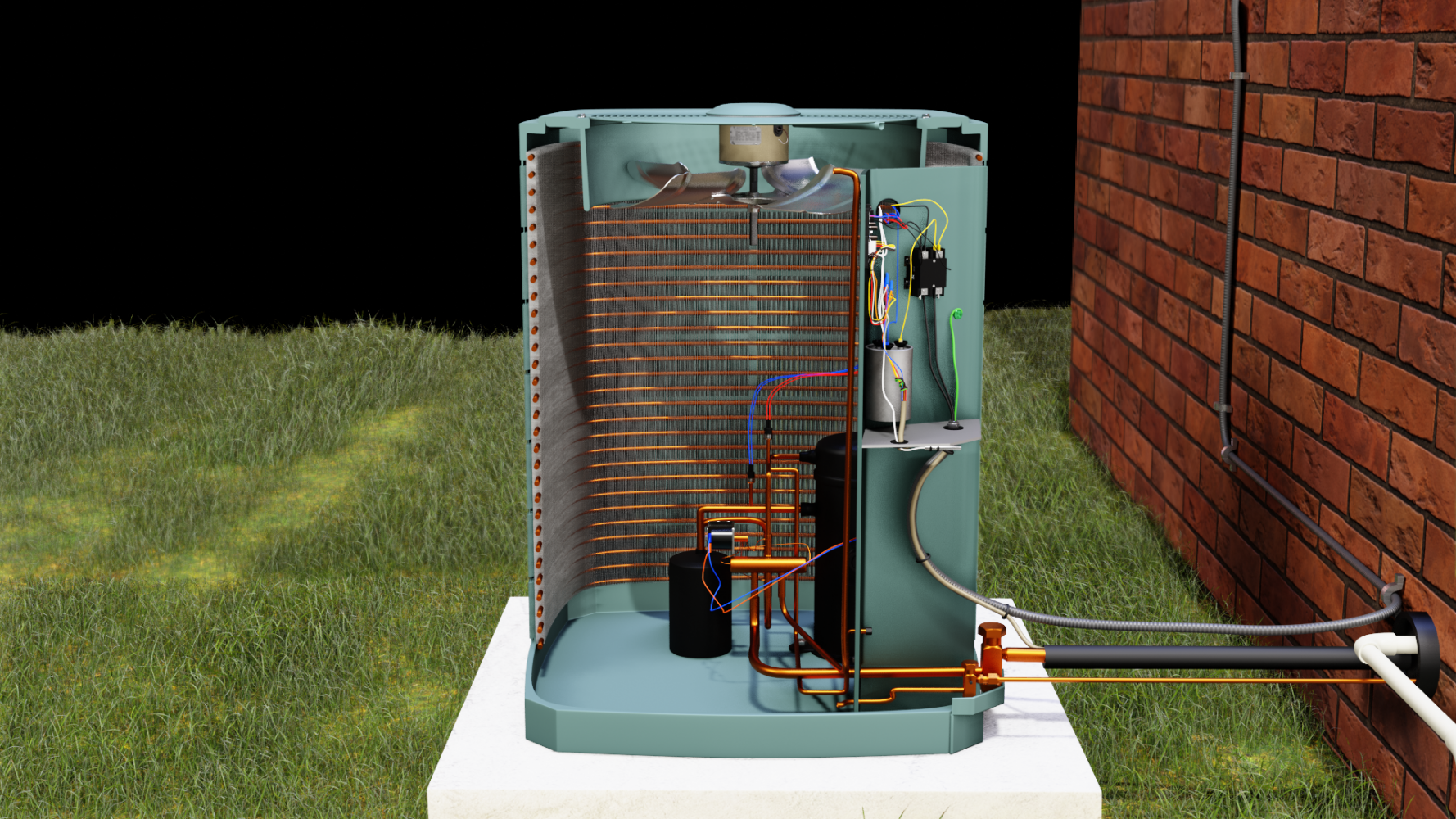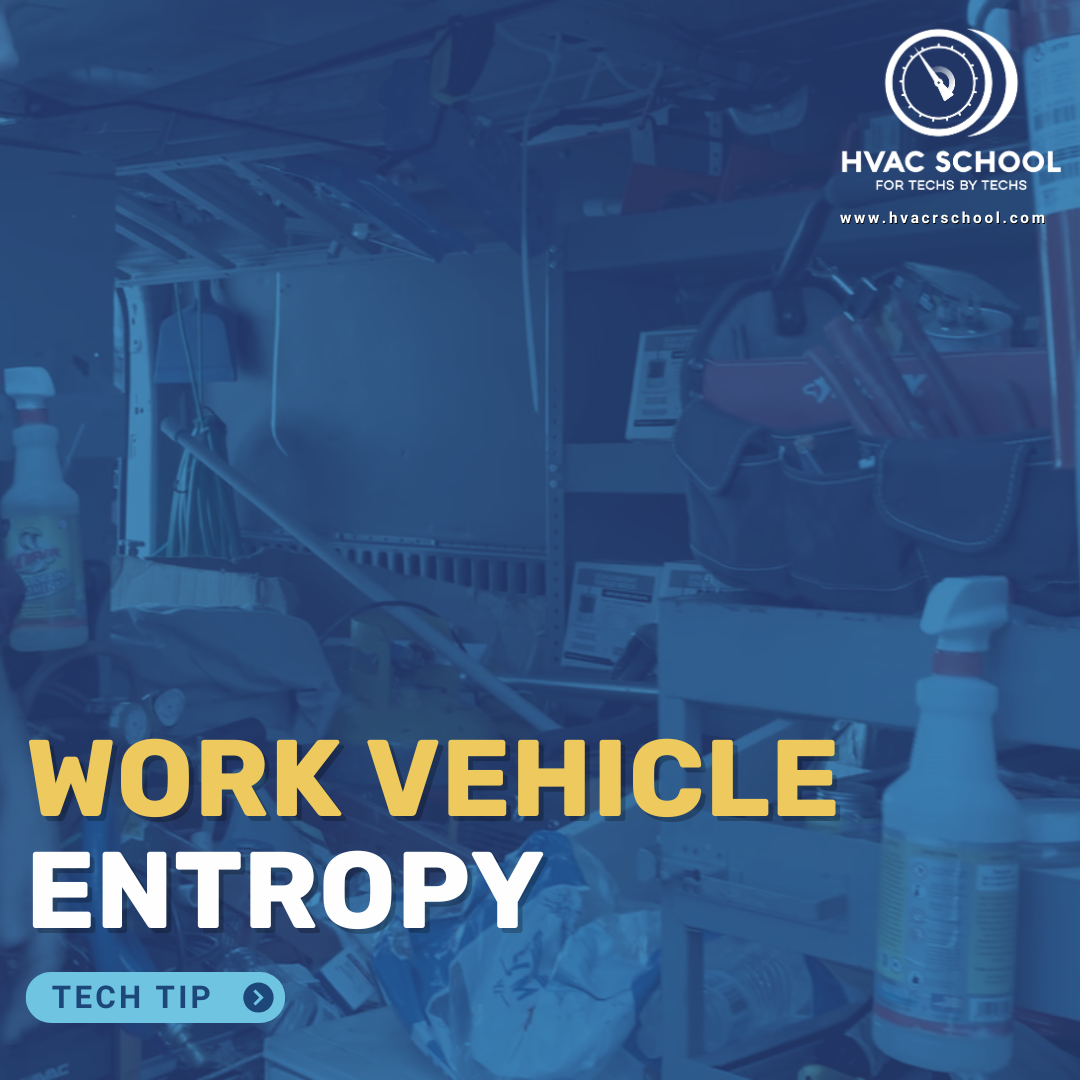Get Tech Tips
Subscribe to free tech tips.
What is an ERV?

This quick tip was written by Daniel Andersen in the HVAC School Group. Daniel was one of my early encouragements to make the podcast, even though he refuses to come on himself. Thanks, Daniel!
ERV – What is it?
An energy recovery ventilator allows fresh air from outside to be introduced into the conditioned space and conditions it (recovers energy) before that air enters the space.
This is especially important on a structure that has a nice, tight envelope where you are required a certain amount of air exchange.
“How does it work?” you might ask.
Sensible Recovery
The core in the ERV allows the incoming air to be tempered by the outgoing air, either absorbing heat from the conditioned air in the winter or dissipating heat from the hot entering air to the outgoing air in the summer.
Latent recovery
Using a desiccant wheel or other desiccant media, the ERV can pre-condition the air by removing moisture from the incoming fresh air and transferring it to the air exiting the space. This “latent” moisture energy transfer is what makes an ERV different than an HRV (heat recovery ventilator).
What will affect its operation?
CLEANLINESS! (Like most things in HVAC/R)
Keep the prefilters clean. Entering air can bring in many contaminants that can QUICKLY clog the pre-filter or inlet bug screen.
I commonly see leaves and airborne debris in the filter area. Cleaning is usually just a matter of using water on the wheel or core.
If it is belt-driven, make sure the sheave and belt are in good shape and properly aligned and adjusted.
—Daniel










Comments
Excellent article!
Excellent article!
Have you ever considered about including a little bit more than just your articles? I mean, what you say is fundamental and everything. Nevertheless just imagine if you added some great photos or videos to give your posts more, “pop”! Your content is excellent but with pics and videos, this blog could undeniably be one of the most beneficial in its field. Wonderful blog!
Have you ever considered about including a little bit more than just your articles? I mean, what you say is fundamental and everything. Nevertheless just imagine if you added some great photos or videos to give your posts more, “pop”! Your content is excellent but with pics and videos, this blog could undeniably be one of the most beneficial in its field. Wonderful blog!
Thanks Dean!
Thanks Dean!
Have him right one on ERV vs HRV 🙂 I still dont have a true grasp of them! THANKS for all you do!
Have him right one on ERV vs HRV 🙂 I still dont have a true grasp of them! THANKS for all you do!
Photo or illustration?
Photo or illustration?
dean great description but a couple of pic would have been a nice add. maybe do a post on hrv vs erv.
dean great description but a couple of pic would have been a nice add. maybe do a post on hrv vs erv.
[…] ERV stands for Energy Recovery Ventilation. They’ve been around for many years, starting in the commercial sector, then appearing in houses when codes started requiring more ventilation. You can learn more about how an ERV works here. […]
[…] ERV stands for Energy Recovery Ventilation. They’ve been around for many years, starting in the commercial sector, then appearing in houses when codes started requiring more ventilation. You can learn more about how an ERV works here. […]
To leave a comment, you need to log in.
Log In